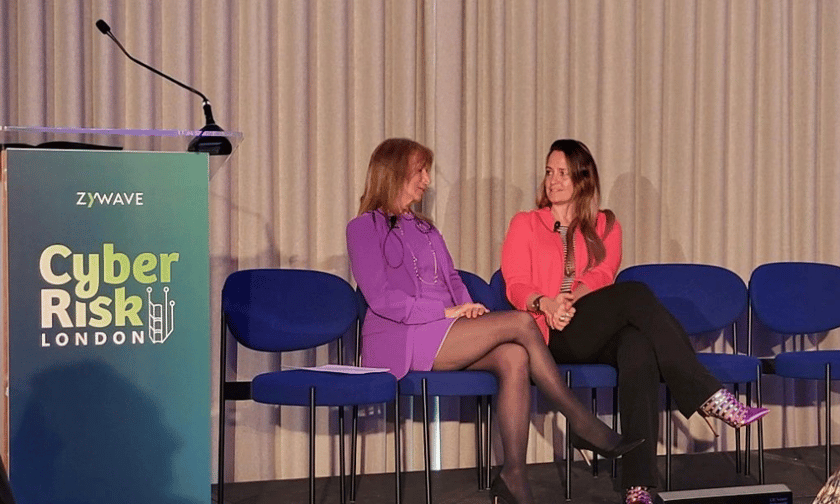

Reflecting on the record-breaking full-year 2023 results published by Lloyd’s of London at Zywave’s ‘Cyber Risk Summit’ in London, Lloyd’s CUO Rachel Turk (pictured right) cautioned against the impulse to “call victory a bit too early”.
In conversation with Vicky Carter (pictured left), chair of global capital solutions international at Guy Carpenter, Turk emphasised that while this “fantastic set of results” had been hard-earned, it’s tempered by the caveat that a lot of nat-cat activity didn’t occur where it was traditionally expected. With that in mind, she said, the underlying net combined ratio isn’t quite as strong as the 80% range posted, and the market must avoid the temptation to give away rate based on profitability that is a result of unusual nat-cat activity.
“We’re still in a really complex environment,” she said. “We’ve got geopolitical tensions that are going to remain, we’ve got the world going to the polls and we’re expecting a shift to the left and to the right – and a move away from centrist politics. And climate risk, in my opinion, is not yet fully factored into property pricing. So, there are still a lot of headwinds where we’re going.”
The insurance industry is equipped to lean into the complexities of this environment, she said, but it needs to do so armed with an accurate picture of where it currently stands. Looking at the underlying return on capital in the market, it’s still not where it needs to be and there is still more work that the industry needs to do to move that dial.
Offering a broking perspective, Carter noted that rather than focusing attention on driving rates down, conversations in the sector should be looking at how to bring more capital into the market. One of the challenges facing the sector is that the cost of capital is having to be met by a lot of underwriting operations, she said, which forestalls new capital coming in. But after two consecutive years of strong profitability, will more capital make its way into the market?
“I think we need another year of sustained good profits, if I’m honest, to really persuade capital,” Turk replied. “I think the braver capital may start to come in. I’m not sure we’re going to see a complete wave of new capital coming in, so that’s another headwind. But there are signs of life in that capital market [now] that returns are starting to move back to a level where they would be interested.”
Turk highlighted that in the context of the overall makeup of the Lloyd’s market, the premium contribution of cyber is still quite small, particularly considering the amount of publicity it generates. Lloyd’s recent market message mapped out four realistic disaster scenarios (RDSs) for cyber, and found that if you combined the impact of all four independent events, it still registered as less impact than the largest nat-cat RDS.
“The nat-cat models are more advanced than the cyber models, so there’s a bigger degree of uncertainty in the cyber market,” she said. “But when you put that into context, those sorts of data points give me way more comfort in the growth potential of cyber and our ability to allow cyber to continue to grow.
“… If I went back 10 or so years ago, it probably wasn’t a massively complicated class. It is now one of the most complex classes to analyse. So, the focus that we have now is much more on capabilities and moving away from rules-based to capabilities-based.”
Carter highlighted that, from the Guy Carpenter side, she is seeing a lot more interest in investments into cyber now, with alternative capital coming into the cyber arena in 2024 offering a significant opportunity to the market. Turk agreed that this does represent a real opportunity, especially as the landscape is constantly evolving. When you throw AI in the mix, she said, and consider what that might do to reshape the risk landscape, you can see why the sector is so attractive for investment.
“When you look at all of the insurtech activity, and all the innovation activity, it feels disproportionately cyber-based versus other areas of innovation that we've been looking at,” she said. “It’s an interesting market and a market that’s able to innovate to solve the problems of tomorrow, and not just focus on what they've got today.”
